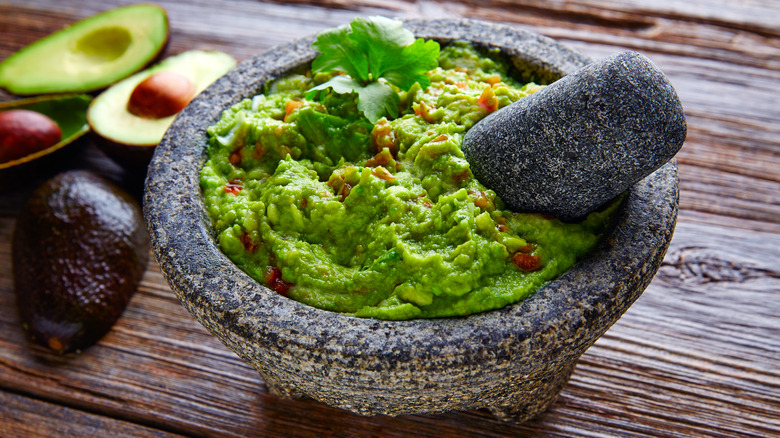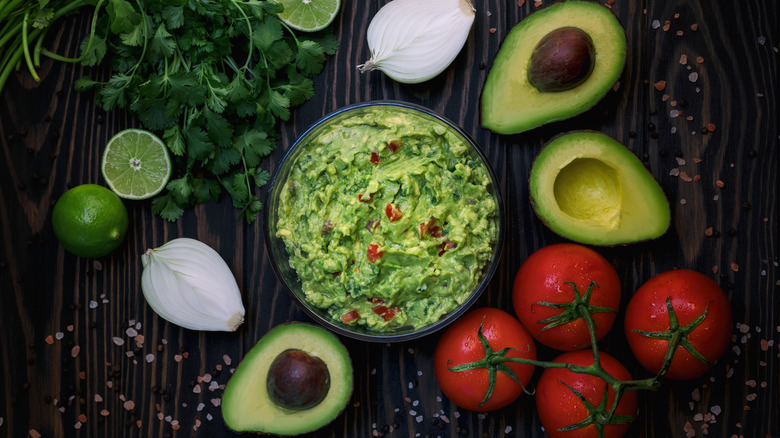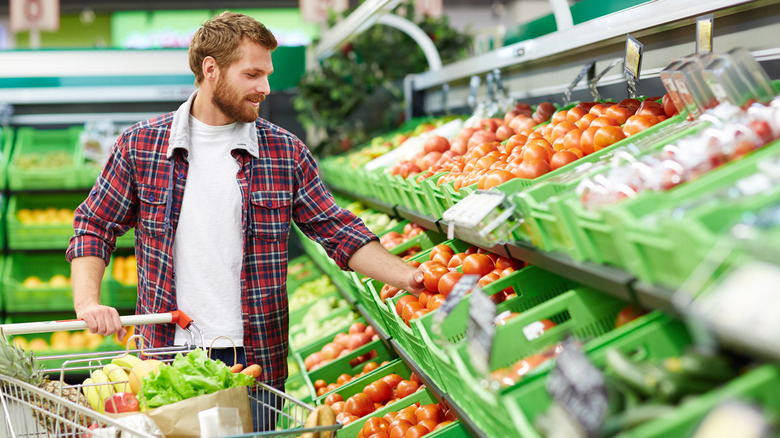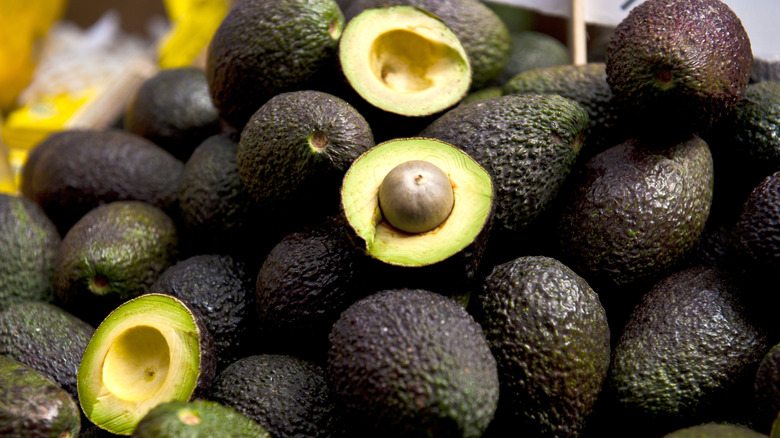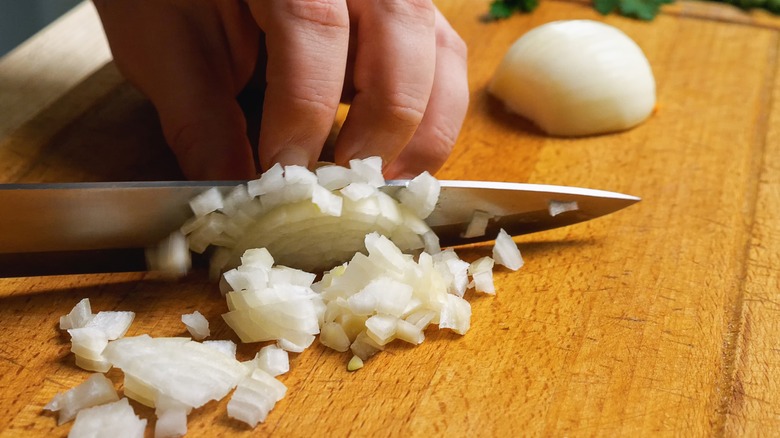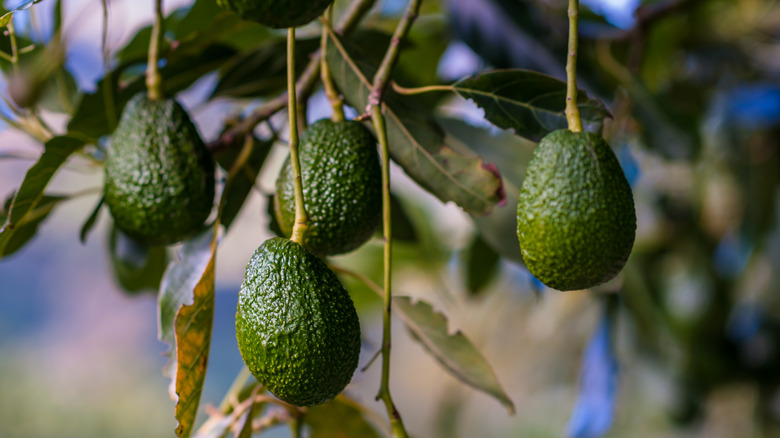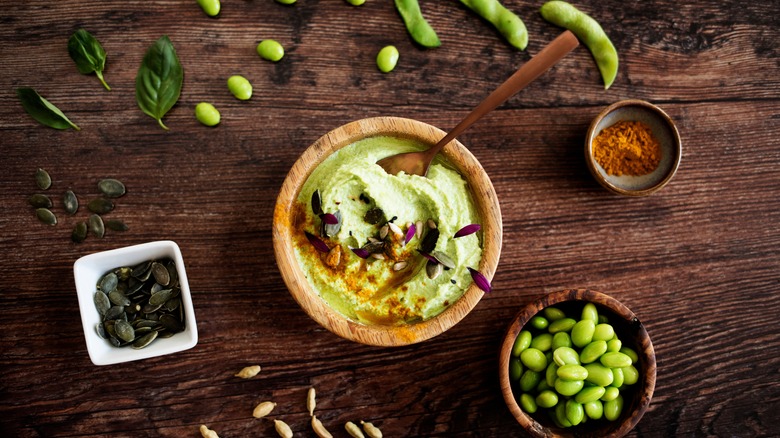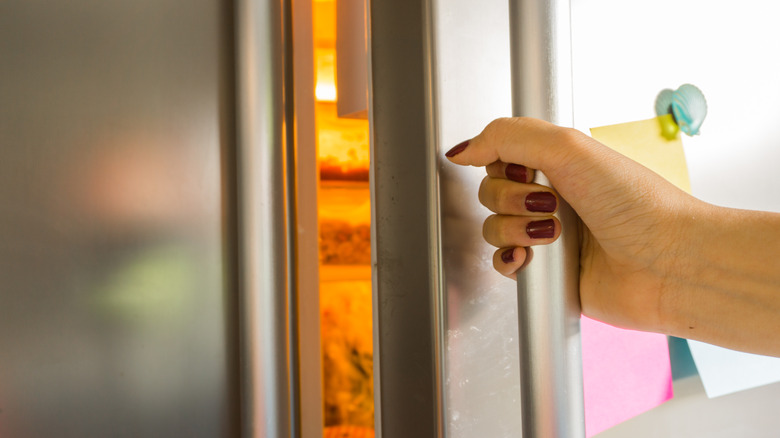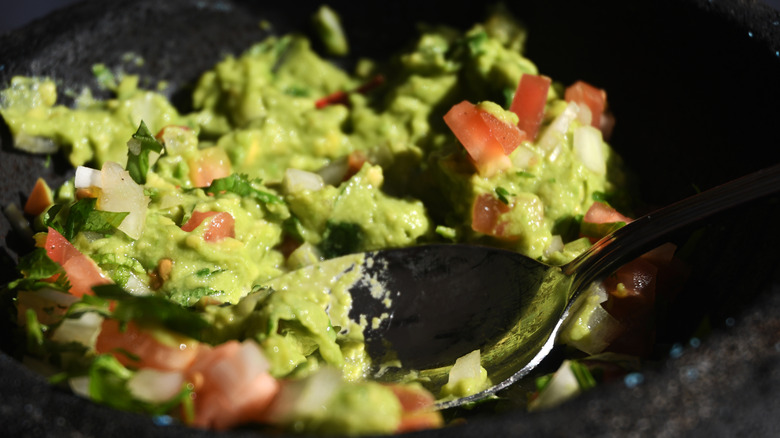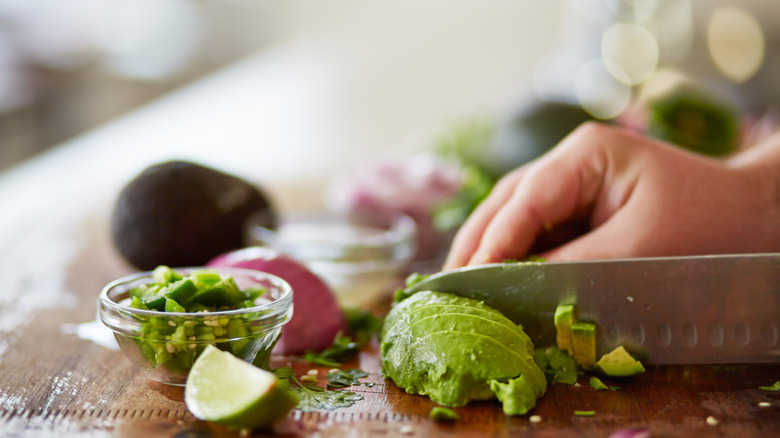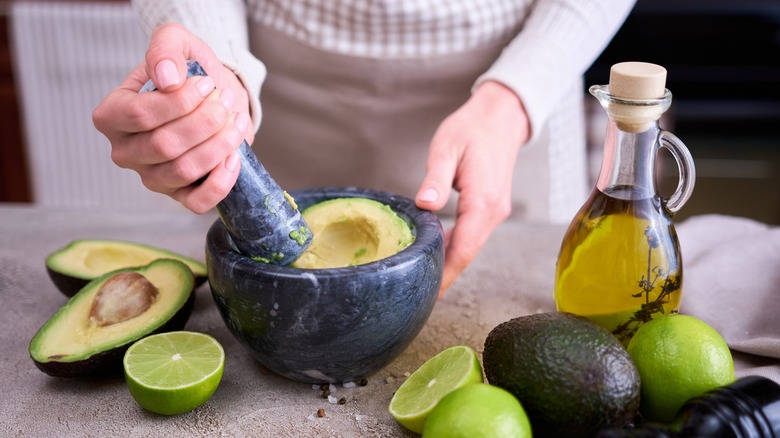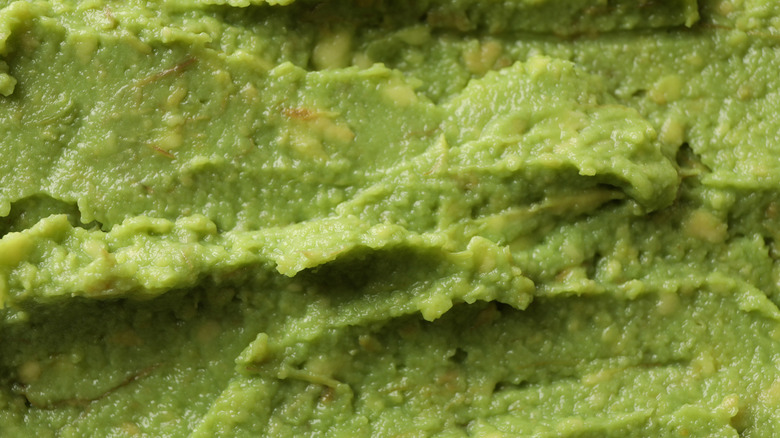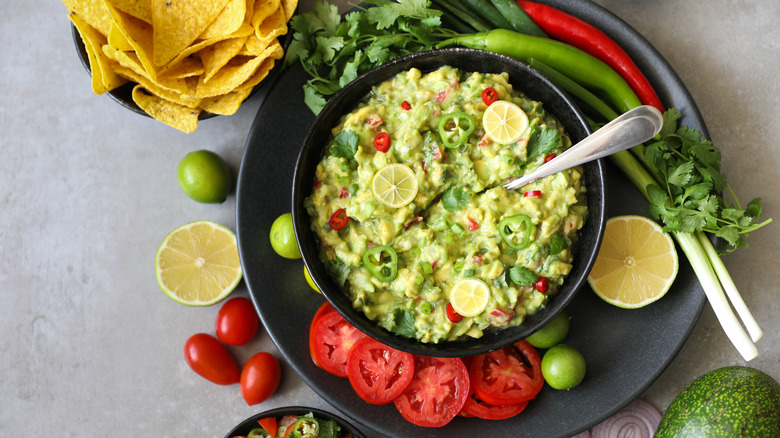12 Mistakes You're Probably Making With Your Guacamole
Whether you're obsessed with Chipotle's guacamole or prefer to make it yourself, the snack's popularity has only increased over time. Surprisingly, the Super Bowl is responsible for the globalization of avocados and guacamole. In a long-term plan concocted by the global PR team at Hill & Knowlton, the Super Bowl became known as the Guacamole Bowl (per The Atlantic). Every year, Americans gear up for the game by whipping up dip. So the team at H&K chose to capitalize on this, making guacamole a fan-favorite year-round.
Guacamole recipes vary from kitchen to kitchen. What remains the same is the creamy goodness and the dish's unique balance of flavors. Some chefs, like Wolfgang Puck, opt for more garlic. Others, like Curtis Stone, choose to leave out tomatoes. In any case, guacamole is a great dish that you can customize to your liking. While it might be challenging to make, the result is worth it. Even though there are multiple ways to make guacamole great, there are plenty of ways it can go wrong. Next time you mix up your favorite dip, steer clear of these common mistakes.
1. Not using the classic ingredients
If it's not broken, don't fix it. At its core, guacamole only requires a few ingredients: avocados, onion, and lime. Guacamole's robust flavor comes from ingredients that have been added to the original recipe — which was just avocados. Before the 16th century, Aztecs called the dip "āhuacamolli", translated literally as "avocado sauce". It wasn't until the Colombian Exchange that ingredients like garlic and cumin were integrated (per Food Origins). As guacamole made its way out of Central America and into other countries, further ingredients refined the recipe.
These days, guacamole recipes contain avocados, onion, tomatoes, cilantro, lime juice, jalapeño, garlic, and salt. With good reason, too! These bold ingredients create a fresh blend of heat and acidity while also being crisp, fresh, and full of texture. While some ingredients can be changed — such as using a different element of heat like paprika or using a different onion variety – these base ingredients are what make the dip what it is. While we agree it's fun to change it up sometimes, the classic recipe is still a worldwide favorite.
2. Not picking fresh ingredients
One of the best things about guacamole is its freshness. You can't achieve that with canned or soon-to-expire ingredients. Guacamole is also healthier with fresh ingredients, as store-bought guacamole generally has added sugars and more sodium. According to Healthline, avocados are full of healthy fats and vitamins, including magnesium, B6, vitamin C, vitamin E, potassium, and folate. Likewise, tomatoes are a good source of vitamin C and potassium. Since its ingredients are nutrient-rich, fresh-made guacamole is a hearty snack. Most will argue that store-bought guacamole doesn't taste as good as when it comes from the kitchen, and we also suggest making it fresh for optimal flavor.
When shopping for avocados, look for ones with tight skin and no pockets or dents. For jalapeños, grab the ones without blemishes or tears on their skin. If you see jalapeños that appear to have stretch marks, they'll be spicier. Look for heavy lemons or limes (although we suggest limes) as it means they're full of juice. Tomatoes should be blemish-free with tight and shiny skin.
3. Using incorrect avocados
When the pandemic hit, "eating green" became the new norm. The demand for superfoods like avocados sky-rocketed. According to the USDA, Americans' consumption of avocados has tripled from 2000 to 2021. In addition, diet plans like the keto diet and paleo diet contributed to a higher demand for avocados. In particular, hass avocados became the new favorite because they ripen so well. Who hasn't sliced into a hard avocado and just wish it was ready to spread?
When making guacamole, hass avocados work best because of their rich taste and buttery texture. Although the big, bright green Florida avocado is ideal for slicing, the hass avocado is the clear winner for mashing, whipping, and spreading on toast. Hass avocados are more nutritionally beneficial, too: One cup of hass avocado has 384 calories and 35 grams of fat compared to a cup of a Florida avocado, which contains 276 calories and 23 grams of fat (per Avoseedo). You're welcome to try a different variety, but it might be better to just trust us on this one.
4. Not chopping ingredients the right way
Chunky guacamole is good. We love chunky. But chunky does not mean haphazardly dicing the onions and tomatoes in various sizes. Not only will your guacamole have a better mouth-feel if you take the time to chop your ingredients into small, uniform pieces, but it'll be a lot less work to mix together. Yes, we're in the comfort of our kitchens where mistakes can be made. But there's no harm in practicing a little finesse, too. Perhaps you didn't even realize there was a wrong way to cut your vegetables.
If tomatoes are cut too small, your dip will be mushy. However, smaller onions are better. Big bites of onion are unappetizing, so finely dice them to get that crunch without it being overwhelming. Start by cutting off the end opposite of the onion's root. Then, cut through the root as you cut it in half while keeping the root intact, so you have something to grip while dicing the onion. Cilantro should be chopped fine to save time later when grinding the mixture. To prevent avocados' oxidation, avoid using metal knives. Stainless steel knives contain copper and iron, which affect an avocado's enzymes, turning them brown. To easily cut your avocado, Rachael Ray recommends using a cooling rack to slice your avocado into little, mash-able cubes.
5. Using unripe avocados
A common mistake when making guacamole is using unripe avocados. When avocados are unripe, they are bitter, difficult to mash, and less creamy. It's not always easy to find a perfectly ripe avocado, and there is a fine line between ripe and overripe. When avocados turn brown, you have to cut away more to get to the good, green stuff. You can tell when an avocado is ripe because it will be less firm when you squeeze it, but without soft spots. Too many soft spots mean it's likely browning. Sometimes it's better to pick an unripe avocado and wait for it to reach its prime.
Luckily, there are ways to speed up the ripening process. In an exclusive interview with Tasting Table, Chef Aarón Sánchez suggests putting an unripe avocado by your windowsill or another open area. As soon as the fruit is firm, put them in a paper bag and use them when they're ripe and ready. Since avocados are an ethylene-producing food, they will ripen a little faster if you put them near other fruits that emit this gas — such as bananas. Ethylene gas is a natural ripening agent.
6. Missing or adding too many ingredients
There are a few rules to making guacamole, especially when it comes to its classic ingredients. By missing a few essentials, or adding too many extra ingredients, the recipe's quality suffers. Too much lime will add far too much acidity. But if you forget the lime, the dip won't have the required acidity. Some substitute lemons for limes, whereas others claim that limes are the O.G. for guac. Lemons are a little tarter than limes, but either will add that desired citrus flavor. Guacamole is all about making it your way, while not straying too far from the traditional version.
Some ingredients are needed — like salt to combat blandness or an element of heat. It doesn't have to be jalapeño: Eva Longoria likes to use serrano peppers in her homemade guacamole. However, that pepper is spicier than jalapeños. There is such a thing as overdoing it and adding ingredients that aren't cohesive. Peas, asparagus, edamame. Why? You don't have to be a purist about your recipe — experimentation can result in great things. Add that fruit, but don't add three fruits, because then it becomes something other. Please, leave the Hellmann's mayo out of it. That heaviness will detract from the other fresh flavors of guacamole. Let's be honest: It just doesn't make sense.
7. Not storing it the right way
Making delicious guacamole is only part of the battle: Storing it properly is the other half. Guacamole turns brown as soon as the avocado starts oxidizing. Brown guacamole isn't unsafe to eat, but it's not exactly visually enticing. Certain ingredients keep the dip green for longer — like olive oil, sour cream, and lime. But if you don't want to add more ingredients or use extra citrus, which can compromise the overall flavor, store your guac correctly.
There are quite a few methods to saving guacamole, mostly involving putting a layer of some liquid on the dip before wrapping it. It could be olive oil, water, extra lime/lemon, or cooking spray. Do this before sealing the bowl with plastic wrap, and it'll last longer. When using plastic wrap, the goal is to get as much air out as possible. Press gently so the wrap touches the guacamole, or if you're putting liquid between, make sure the plastic wrap is in contact with it before wrapping it tightly or placing a lid on the bowl. As far as how long guacamole should be stored, we suggest tossing it after about 3 days. Any longer and it's going to lose its fresh quality — be it from lack of moisture or mushy ingredients.
8. Forgetting to taste before serving
As any chef will tell you, taste as you go. When making guacamole, the goal is to create balanced flavors. Traditional guacamole consists of a few key ingredients. As you tinker with your recipe, remember you can always add more of an ingredient, but you can't take it away once it's there. Sure, we've over-poured the salt or pepper and quickly scooped it out of a dry mix. Yes, there was that time you rinsed off a chicken breast after accidentally dumping seasonings on it. (Just me? Oops.) Guacamole is not like that. Once you add something, it's stuck in the creamy mixture.
To avoid a bad dip, taste as you create. Fear not! There are ways to fix a recipe mistake. If you use too much lemon and lime, making it sourer than desired, add more mashed avocado. Still too sour? Add a dash — only a little! — of sugar. A touch of sugar is also a good way to fix guacamole if you used unripe avocados, causing the dip to be bitter. Likewise, you can add citrus. Overdid it on the salt? The answer here is more avocados, more heat, or an ingredient that likes to soak up salt like olive oil. Ree Drummond suggests testing the salt levels with a tortilla chip.
9. Making it too early
Guacamole doesn't keep its quality for a prolonged time, primarily because avocados naturally degrade once cut. Typically, guacamole is not something you should make too early before serving. For some dishes like salsa, letting all the flavors sit for a while increases their flavor. Curry, broths, and chili are all delicious the next day. Ideally, guacamole should be mixed together and consumed within an hour. When guacamole sits for too long, the moisture from the tomato and other wet ingredients turns the dip into a mushy texture. Onions lose their crispness and cilantro wilts. As guacamole loses its quality, it can become watery or brown.
Sadly, guacamole is just not meant for meal prep. We would also like to hoard it in large quantities and pull it out as a weekly snack. Nevertheless, it's a snack that is at its best when it's fresh. As much as we love the dip, we love it less when it looks so unappetizing.
10. Over-mashing your avocados
Yes, avocados need to be mashed up to be a good base for your dip. The result of mashing them too much is they become watery and too mushy to be a sturdy component. It's totally acceptable — and preferred — to leave your avocado chunky. To prevent over-mashing, stay away from the food processor. It'll turn the avocado into a puréed liquid. Think of mashed potatoes: Creamy with lumps, but when done with a blender or processor, they turn gummy. Avocados have a similar nature, quickly turning into a soup when blended.
By using the correct tools, like a potato masher or a fork, mashing avocados can be as easy as popping them in the blender. After cutting your avocado, removing the pit, and scooping out its contents, slice or dice before mashing. Gently start squishing and stirring the avocados into a mash. Try not to overdo it with the tools, so your avocados maintain their delicious texture.
11. Getting the wrong consistency
There's a science to getting the consistency of guacamole perfect. Guacamole is a blend of chunky and buttery textures, with each ingredient playing a part and creating a tasty harmony. Too thin, and it becomes like a sauce. Is there such a thing as too-thick guacamole? Traditionally, guacamole ingredients are ground up using a mortar and pestle before stirring it all into hand-mashed avocados. This method is a wonderful way to break down ingredients while releasing all the aromatic flavors. Even though it works, you could still have bits of cilantro stem or massive chunks of tomato or onion if you don't keep at it. Plus, using a mortar and pestle can be time-consuming.
While you shouldn't put your avocados in a food processor, it can help the rest of your ingredients. Without over-mixing everything, blast your tomatoes, cilantro, onion, garlic, peppers, and lime in a food processor. Remember to keep it creamy. Stir all of those ingredients into your mashed avocados, and you'll achieve a balance of smooth and chunky dip with all of the classic flavors.
12. Sticking to the same recipe
Since every cook has a unique way to make guacamole, there are a lot of variations to try. Indeed, classics are classics for a reason. But nothing says you can't try a new recipe or a new ingredient in your tried-and-true dip. While there are classic ingredients that belong in guacamole, you can also try adding more heat or a dash of sweetness to complement the dip's other ingredients.
Some fruits that pair well with the flavors of guacamole are mango, pineapple, or papaya. The tropical sweetness of these fruits adds a juicy bite to the dip. Another ingredient you can alter is the kind of onion you use. Each onion has a different taste, so switch it up between white, red, and Vidalia — if you want a sweeter guac. Or pick a different recipe! There are so many different and authentic Mexican recipes for guacamole — from using pears, guava, jicama, radishes, or ground anise — to imitate the taste of some of the avocados that are native to Mexico.
